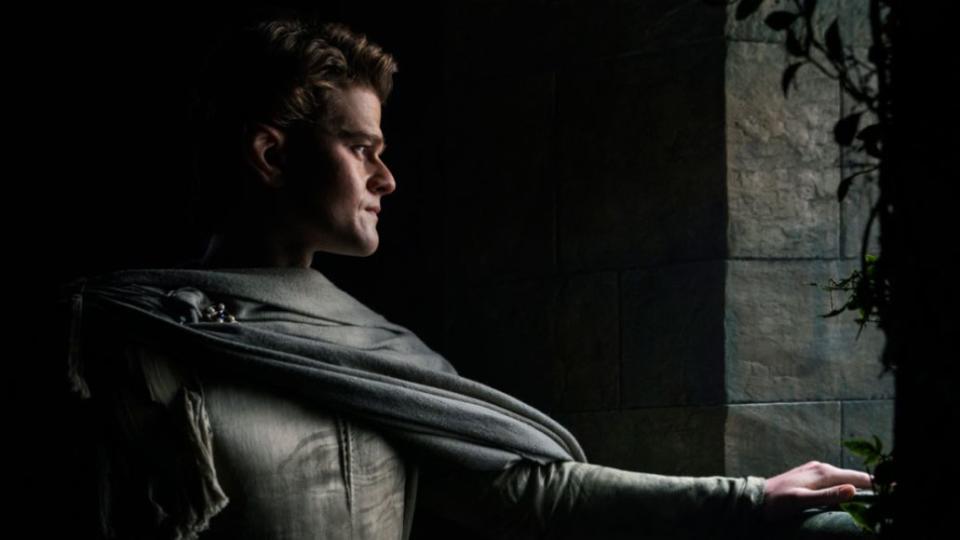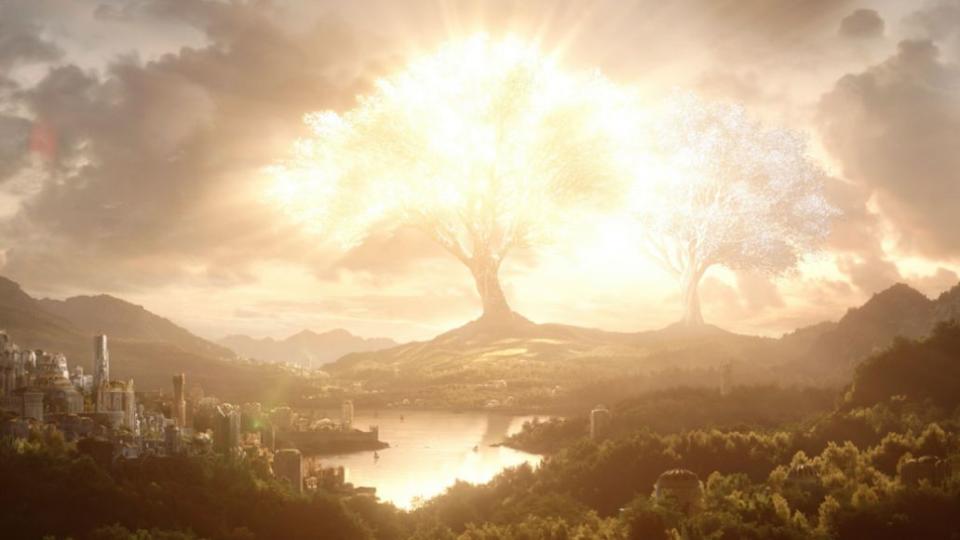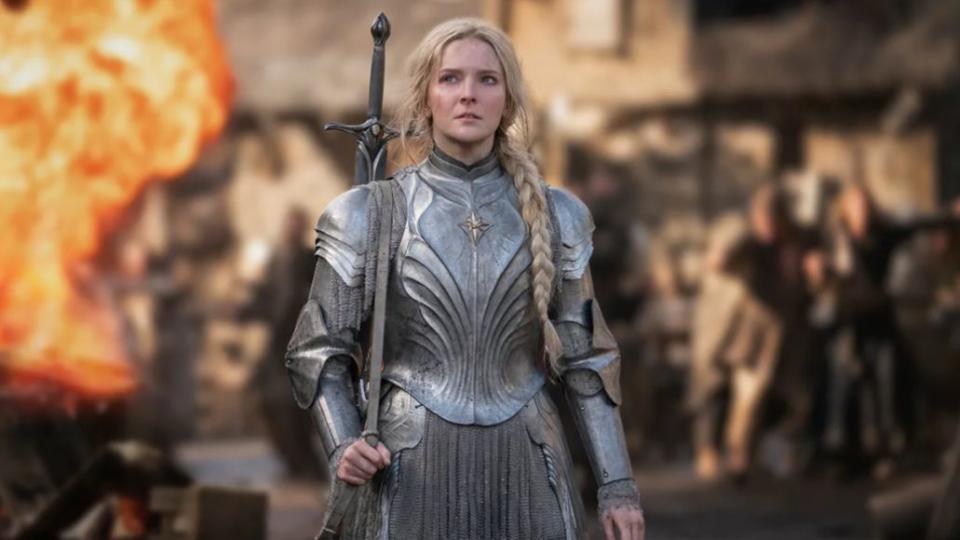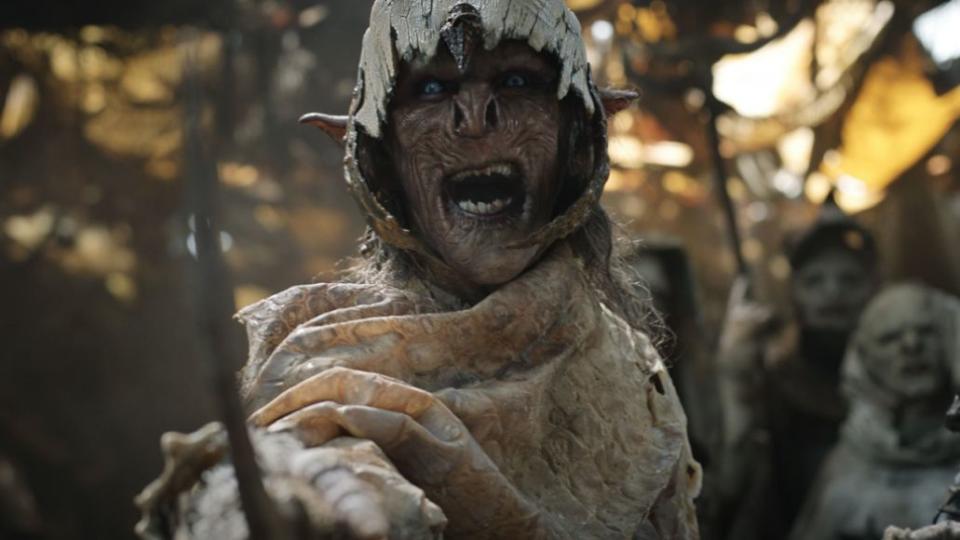Here’s What The Lord of the Rings: The Rings of Power Can (and Can’t) Do With J.R.R. Tolkien’s Books
- Oops!Something went wrong.Please try again later.
The post Here’s What The Lord of the Rings: The Rings of Power Can (and Can’t) Do With J.R.R. Tolkien’s Books appeared first on Consequence.
J.R.R. Tolkien’s book The Lord of the Rings is the preeminent fantasy novel of our time and has had a profound influence on literature and pop culture. Without Lord of the Rings, there would probably be no Star Wars, no Game of Thrones and House of the Dragon, no Wheel of Time, and no Dungeons & Dragons (either the game or the upcoming movie). Turn on your TV and you can find references to Rings in everything from Stranger Things to Better Call Saul, not to mention countless rock and metal songs.
Hollywood adaptations of Tolkien date back to 1977 with Rankin/Bass’s beloved animated TV movie The Hobbit. But it was Peter Jackson’s Lord of the Rings film trilogy that turned Tolkien’s classic into a box office and Oscar gold mine that even a Dwarf-lord would envy. And while Jackson’s Hobbit movies weren’t as well-received, they certainly made a lot of money.
So it was only a matter of time before another Tolkien adaptation came along, and Amazon proved rich and ambitious enough to tackle it. But what could they adapt? Jackson’s Rings and Hobbit movies are still too new and iconic to be remade, and the Tolkien Estate refuses to sell the rights to adapt The Silmarillion. But Amazon has found a way. How? Read on to find out.
What Is the Amazon Prime Video Lord of the Rings Show?
The show is titled The Lord of the Rings: The Rings of Power and the first of at least two seasons will debut on Amazon Prime Video this fall.
So, What Specific Books by J.R.R. Tolkien Are Being Adapted?
None! Amazon doesn’t actually have the rights to adapt any book by Tolkien. This isn’t a straight adaptation of The Lord of the Rings, The Hobbit, or The Silmarillion. Instead, they have the rights to adapt the settings, characters, and histories of the Second Age. They are also not allowed to contradict any canonical events in the First or Third Ages, so already-established characters like Elrond, at least, are safe from a shocking end-of-season decapitation like Ned Stark suffered in Game of Thrones. (Or, if Elrond does get beheaded, he is contractually obligated to get better).

The Lord of the Rings: The Rings of Power (Prime Video)
Explain These Ages to Me? I Failed Silmarillion in College
Tolkien wrote about three ages of Middle-earth: the First, Second, and Third. The First Age is largely chronicled in The Silmarillion. That’s the mythic age that characters in The Lord of the Rings look back on, the way we look back on the ages of King Arthur or Hercules.
The First Age is the high tide of the Elves, when they and some Men fought against the first and greatest Dark Lord, Morgoth (Tolkien’s stand-in for Satan), for possession of three holy jewels called Silmarils. Galadriel was a minor player in the First Age and Elrond was born at the tail end of it. Sauron was a major player, serving as Morgoth’s right-hand-man. When Gandalf refers to the Balrog as “a demon of the ancient world,” the ancient world he’s referring to is the First Age.
The Third Age is the setting for The Hobbit and The Lord of the Rings (in fact, they chronicle its end, with the final defeat of Sauron). It’s the twilight of the Elves as they, and other magical creatures like dragons and Ents, have largely faded to the margins and become, for most Men, little more than legends.
In Tolkien’s writings, the Second Age is transitionary. Elves and Dwarves are no longer the dominant races in Middle-earth as they were in the First Age, but they’re still active and powerful presences in the world. Mortal Men live throughout Middle-earth, and have also established an advanced and powerful civilization on the Atlantis-like island of Númenor (Aragorn, Boromir, Faramir, and Denethor in Lord of the Rings are all direct descendents of the Númenoreans).
The Second Age is actually the age of Middle-earth that Tolkien wrote about the least, and the events of this era are only sketched out in background material like The Silmarillion’s “Akallabêth” section (a rather brief summary of the rise and fall of Númenor), the appendices of The Lord of the Rings, and in incomplete stories and writings that appear in compilations like Unfinished Tales and The History of Middle-earth. (Just in time for the show, HarperCollins has released a new book called The Fall of Númenor that collects Tolkien’s various writings on the subject).

The Lord of the Rings: The Rings of Power (Prime Video)
The two main events of the Second Age are the forging of the Rings of Power by the Elves and Sauron, the subsequent war over them, and the downfall of Númenor. In Tolkien’s writings, those events are separated by centuries, but Amazon seems to be compressing them to a single period in history.
The Tolkien Estate does seem to have granted Amazon some leeway in adapting the material, aside from scrambling the timeline. Trailers for Rings of Power have shown the Two Trees of Valinor, which only existed in the First Age. Those shots are likely from flashbacks, but that still means Amazon has the rights to depict some events and settings from the First Age, however briefly.
So Is It a Prequel to Peter Jackson’s Lord of the Rings and Hobbit Movies?
Not officially, but it is set before those films in the official Tolkien timeline, and Amazon supposedly has the rights to use “material from the movies.” That’s why the clothing, hair styles, and architecture of their Elves, Dwarves, and Men will look familiar to anyone who has seen the Jackson movies. Similarly, the Balrog that briefly popped up in the latest trailer is straight out of Fellowship of the Ring.
Jackson’s films have profoundly shaped the way most people these days imagine Middle-earth (far more than Rankin/Bass’s or Ralph Bakshi’s 70s and 80s adaptations did), and given the hundreds of millions of dollars that Amazon has already spent on this show, it makes sense that they’re playing it safe by appealing to a familiar vision of what Tolkien’s world and its peoples look like. But the Amazon show is very much its own thing, and while it’s bound to a degree by Tolkien’s storytelling choices, it’s not bound to Jackson’s, even if they do borrow his Balrog.
Okay, But Will Frodo, Bilbo, or Any Other Baggins Be in the Show?
No. In fact, hobbits as a race aren’t even a thing yet. The show is set thousands of years before the first Baggins was ever even a twinkle in the eye of a hairy-footed halfling, but it will feature proto-hobbits called Harfoots (Harfeet?), who appear to be woodland wanderers.
In Tolkien’s writings, the Harfoots are one of three halfing tribes that serve as the distant ancestors of the Shire hobbits we all know and love. It’s implied, for example, that Samwise Gamgee is largely of Harfoot descent. Neither the Harfoots nor any other hobbit ancestors are mentioned in any of Tolkien’s writings about the Second Age, but Amazon is probably right in betting that most people tuning into a Middle-earth show want to see some short pointy-eared second-breakfast lovers.
Will There Be Any Characters I Recognize?

Morfydd Clark as Galadriel (Ben Rothstein/Amazon Studios for Vanity Fair)
Yes. Thanks to being immortal and ageless Elves, both Galadriel (originally played by Cate Blanchett in Jackson’s movies) and Elrond (originally played by Hugo Weaving) are prominent characters in the show, played now by Morfydd Clark and Robert Aramayo. On the side of evil, the Lord of the Rings himself, the Dark Lord Sauron (originally played by a giant, flaming CGI eyeball) will certainly appear, as will the aforementioned Balrog of Moria.
What About Gandalf? I Love Gandalf!
Maybe? Gandalf did exist during the Second Age, but not in human form — instead, he is an angelic spirit named Olórin dwelling in Valinor, the land of the gods on the other side of the sea. Gandalf, Saruman, Radagast, and the other wizards aren’t supposed to arrive in Middle-earth until well into the Third Age.
That said, trailers for Rings of Power have shown a bearded man emerging from a falling star and winding up hanging out with the Harfoots. He’s billed as “The Stranger,” and it’s possible this is Olórin arriving in Middle-earth for an earlier tour of duty (and to establish his noted fondness for hobbits). That doesn’t exactly contradict him coming back again as a wizard in the Third Age, but in a letter-of-the-law versus spirit-of-the-law sort of way.
The meteor man might also be Sauron, or someone else entirely. He’s one of the true mysteries of the trailer, even for people who’ve poured over The Silmarillion, since this is a plot point (and possibly a character) invented entirely by the Amazon series.

The Lord of the Rings: The Rings of Power (Prime Video)
Okay, So What Exactly Are Those Rings of Power?
The Rings of Power are nineteen powerful and magical rings created by the Elves in collaboration with Sauron (in fairness to the Elves, Sauron was wearing glasses and a fake mustache at the time). The Dark Lord later made a twentieth ring, the One Ring that Frodo bears in The Lord of the Rings, to control the others.
The Elves used their three rings to heal Middle-earth’s wounds and preserve their realms in a state of timelessness (by the time of Lord of the Rings, Galadriel, Elrond, and Gandalf possess these three rings). The Dwarves used their seven rings to find more gold and precious metals, though their possession made them increasingly avaricious (by the end of the Third Age, the Dwarven rings have either been destroyed or captured by Sauron).
The Dark Lord gave nine rings to Men, who became great and powerful leaders in their time, but were then slowly corrupted and transformed into the terrifying, undead Ringwraiths who relentlessly pursue Frodo and Company in Lord of the Rings. The Ringwraiths first emerged in the Second Age, so it’s likely the show will include their corruption and fall into shadow.
Last Question: In the Second Age, Could One Simply Walk Into Mordor?
Still no.
The Lord of the Rings: The Rings of Power premieres Friday, September 2nd on Prime Video. Here’s a guide to the announced cast and characters for the series.
Here’s What The Lord of the Rings: The Rings of Power Can (and Can’t) Do With J.R.R. Tolkien’s Books
Austin Gilkeson
Popular Posts
Slash Plays Guns N' Roses Riffs in Humorous New Capital One Commercial: Watch
Brendan Fraser Is a 600-Pound Man in First Look at Darren Aronofsky's The Whale
Kendrick Lamar Responds to Viral Video of Security Guard Crying at His Show
Live Nation Offering 4 Tickets for $80 All-In Package for Thousands of Summer Concerts

